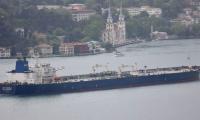PARIS: The expedition that circumnavigated the globe via the oceans for the first time 500 years ago is among the major journeys of discovery by European explorers in the 15th and 16th centuries.
With the mighty Ottoman Empire holding a monopoly on trade with the Indian subcontinent in the 15th century, Portugal´s Prince Henry the Navigator launches a quest to conquer the seas via Africa.
At the time the length of the continent´s coastline was unknown. Less than 30 years after Henry´s death, Portuguese explorer Bartolomeu Dias leads the expedition that rounds the southern tip of Africa for the first time in 1488, opening a new sea route from Europe to Asia.
He calls it the Cape of Storms but Portugal´s King John II renames it the Cape of Good Hope. Dias continues his eastward journey but his exhausted crew eventually forces him to turn back.
Italian Christopher Columbus, determined to reach the East via a western route, makes four voyages across the Atlantic between 1492 and 1504, sailing for the Spanish crown. During the first, he disembarks from his flagship, the Santa Maria, in the Bahamas in October 1492 and then moves on to today´s Haiti, which he names Hispaniola.
In another expedition he sets foot on the American mainland for the first time in present-day Venezuela, but is convinced he is in the East Indies. It is only later that Italian explorer Amerigo Vespucci realises that the landmass that Colombus discovered is a new continent. It is named America in his honour in 1507.
Vasco da Gama from Portugal becomes the first European to reach India via Africa, rounding the Cape of Good Hope discovered by Dias just a decade before. He leaves Lisbon in 1497 and sails around the tip of the continent to reach the coasts of India in 1498.
During his second expedition, Da Gama establishes the first Portuguese trading post in Asia at Cochin in eastern India. Portuguese navigator Pedro Alvares Cabral and his fleet of 13 caravels depart from Lisbon in 1500, on a southwest course to benefit from the trade winds, to discover what he calls "Island of the True Cross" and later becomes Brazil. He then reaches the Indian subcontinent via the Cape of Good Hope, returning to Portugal laden with spices but having lost half of his fleet.
Monsoon clouds loom over the overflowing river Yamuna, in New Delhi, India, July 15, 2023. — Reuters PARIS: Can...
Members of the Texas National Guard stand guard near the border wall between Mexico and the United States, as seen...
Iwao Hakamada, 88, leaves home for his daily stroll in Hamamatsu, central Japan September 26, 2024, 2024, in this...
Spokesperson for Matsamo CPA Bernard Shabangu poses for a photograph near their offices in the Kaalrug area south-east...
A Saudi tailor showing an Arabian robe made by him. — AFP/File Hofuf : Saudi tailor Habib Mohammed´s shop once...







